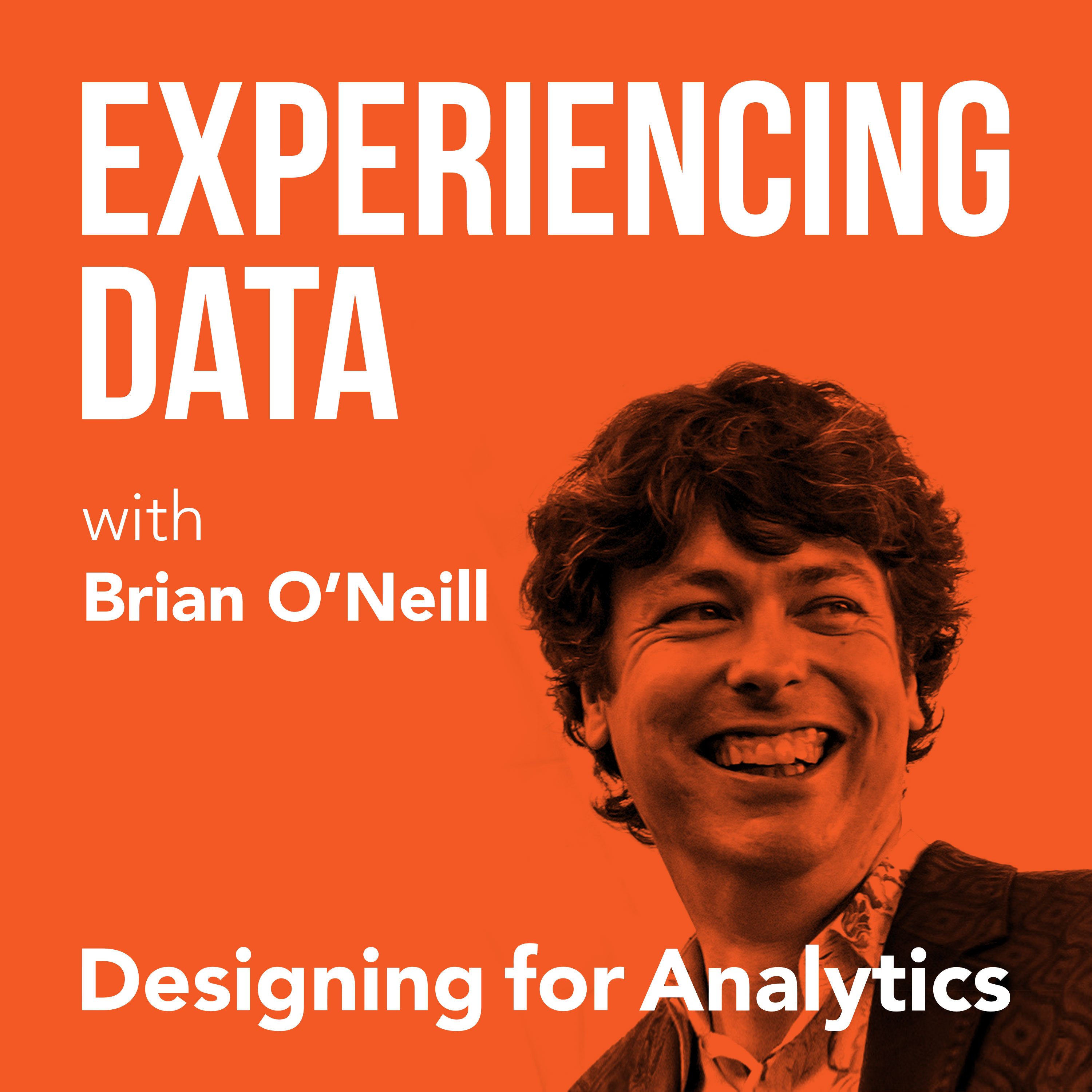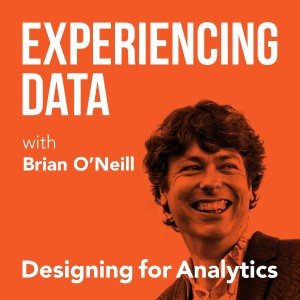

141.5K
Downloads
173
Episodes
Is the value of your enterprise analytics SAAS or AI product not obvious through it’s UI/UX? Got the data and ML models right...but user adoption of your dashboards and UI isn’t what you hoped it would be? While it is easier than ever to create AI and analytics solutions from a technology perspective, do you find as a founder or product leader that getting users to use and buyers to buy seems harder than it should be? If you lead an internal enterprise data team, have you heard that a ”data product” approach can help—but you’re concerned it’s all hype? My name is Brian T. O’Neill, and on Experiencing Data—one of the top 2% of podcasts in the world—I share the stories of leaders who are leveraging product and UX design to make SAAS analytics, AI applications, and internal data products indispensable to their customers. After all, you can’t create business value with data if the humans in the loop can’t or won’t use your solutions. Every 2 weeks, I release interviews with experts and impressive people I’ve met who are doing interesting work at the intersection of enterprise software product management, UX design, AI and analytics—work that you need to hear about and from whom I hope you can borrow strategies. I also occasionally record solo episodes on applying UI/UX design strategies to data products—so you and your team can unlock financial value by making your users’ and customers’ lives better. Hashtag: #ExperiencingData. JOIN MY INSIGHTS LIST FOR 1-PAGE EPISODE SUMMARIES, TRANSCRIPTS, AND FREE UX STRATEGY TIPS https://designingforanalytics.com/ed ABOUT THE HOST, BRIAN T. O’NEILL: https://designingforanalytics.com/bio/
Episodes

Tuesday Nov 30, 2021
Tuesday Nov 30, 2021
Berit Hoffmann, Chief Product Officer at Sisu, tackles design from a customer-centric perspective with a focus on finding problems at their source and enabling decision making. However, she had to learn some lessons the hard way along the road, and in this episode, we dig into those experiences and what she’s now doing differently in her current role as a CPO.
In particular, Berit reflects on her “ivory tower design” experience at a past startup called Bebop. In that time, she quickly realized the importance of engaging with customer needs and building intuitive and simple solutions for complex problems. Berit also discusses the Double Diamond Process and how it shapes her own decision-making and the various ways she carries her work at Sisu.
In this episode, we also cover:
- How Berit’s “ivory tower design experience” at Bebop taught her the importance of dedicating time to focus on the customer. (01:31)
- What Berit looked for as she researched Sisu prior to joining - and how she and Peter Bailis, Founder and CEO, share the same philosophy on what a product’s user experience should look like. (03:57)
- Berit discusses the Double Diamond Process and the life cycle of designing a project - and shares her take on designing for decision making. (10:17)
- Sisu’s shift from answering the why to the what - and how they approach user testing using product as a metric layer. (19:10)
- Berit explores the tension that can arise when designing a decision support tool. (31:03)
Quotes from Today’s Episode
- “I kind of learned the hard way, the importance of spending that time with customers upfront and really digging into understanding what problems are most challenging for them. Those are the problems to solve, not the ones that you as a product manager or as a designer think are most important. It is a lesson I carry forward with me in terms of how I approach anything I'm going to work on now. The sooner I can get it in front of users, the sooner I can get feedback and really validate or invalidate my assumptions, the better because they're probably going to tell me why I'm wrong.”- Berit Hoffmann (03:15)
- “As a designer and product thinker, the problem finding is almost more important than the solutioning because the solution is easy when you really understand the need. It's not hard to come up with good solutions when the need is so clear, which you can only get through conversation, inquiry, shadowing, and similar research and design methods.” - Brian T. O’Neill (@rhythmspice) (10:54)
- “Decision-making is a human process. There's no world in which you're going to spit out an answer and say, ‘just go do it.’ Software is always going to be missing the rich context and expertise that humans have about their business and the context in which they're making the decision. So, what that says to me is inherently, decision-making is also going to be an iterative process. [...] What I think technology can do is it can automate and accelerate a lot of the manual repetitive steps in the analysis that are taking up a bunch of time today. Especially as data is getting exponentially more complex and multi-dimensional.”- Berit Hoffmann (17:44)
- “When we talk to people about solving problems, 9 out of 10 people say they would add something to whatever it is that you're making to make it better. So often, when designers think about modernism, it is very much about ‘what can I take away that will help it make it better?’ And, I think this gets lost. The tendency with data, when you think about how much we're collecting and the scale of it, is that adding it is always going to make it better and it doesn't make it better all the time. It can slow things down and cause noise. It can make people ask even more questions. When in reality, the goal is to make a decision.”- Brian T. O’Neill (@rhythmspice) (30:11)
- “I’m trying to resist the urge to get industry-specific or metric specific in any of the kind of baseline functionality in the product. And instead, say that we can experiment in a lightweight way in terms of outside of the product, health content, guidance on best practices, etc. That is going to be a constant tension because the types of decisions that you enact and the types of questions you're digging into are really different depending on whether you're a massive hotel chain compared to a quick-service restaurant compared to a B2B SAAS company. The personas and the questions are so different. So that's a tension that I think is really interesting when you think about the decision-making workflow and who those stakeholders are.”- Berit Hoffmann (32:05)
Links Referenced
- Sisu: https://sisudata.com
- Berit Hoffmann on LinkedIn: https://www.linkedin.com/in/Hoffmannn-berit/
- Sisu on LinkedIn: https://www.linkedin.com/company/sisu-data/
No comments yet. Be the first to say something!